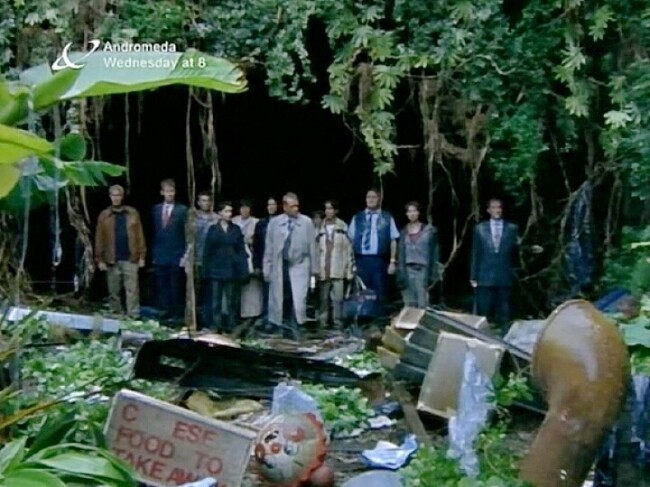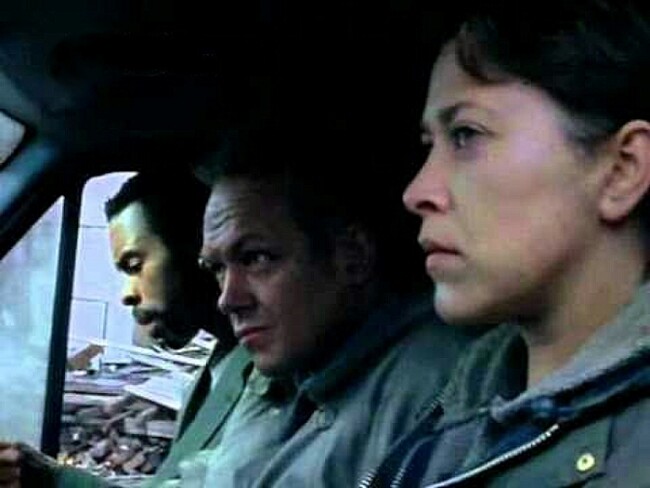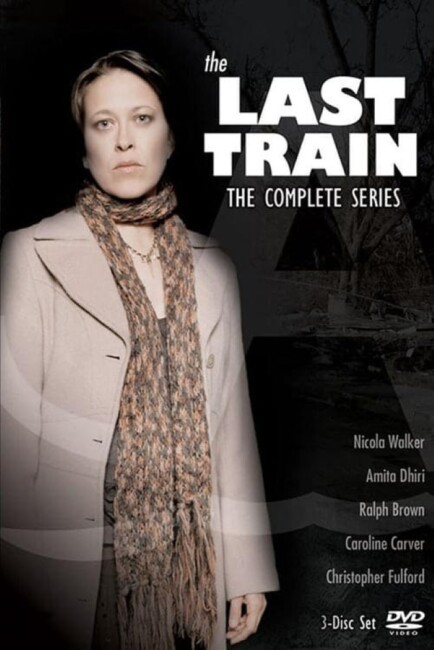UK. 1999.
Crew
Directors – (Episodes 1-2, 6) Stuart Orme & (Episodes 3-5) Alex Pillai, Teleplay – Matthew Graham, Producer – Sita Williams, Photography – (Episodes 1-4, 6) Sean Van Hales & (Episode 5) Gordon MacGregor, Music – Cristopher Gunning, Production Design – Stephen Fineren. Production Company – Granada Television.
Cast
Nicola Walker (Harriet Ambrose), Christopher Fulford (Ian Hart), Treva Etienne (Mick Sizer/Michael Smith), Zoe Telford (Roe Germaine), Amita Dhiri (Jandra Nixon), Steve Huison (Colin Wallace), Sacha Dhawan (Leo Nixon), James Hazeldine (Austin Danforth), Janet Dale (Jean Wilson), Dinita Gohil (Anita Nixon), Caroline Carver (Hild), Kenneth Colley (Mark), Deborah Findlay (Gillian), Ralph Brown (Jonathan Geddes)
Plot
Assorted people catch a train to Sheffield. These include:- Mick Sizer, a criminal on the run; police detective Ian Hart; Jandra Nixon who is fleeing an abusive husband with her two children; Roe Germaine who has discovered she is pregnant but doesn’t want the child; businessman Colin Wallace, and others. As the carriage enters a tunnel, there is a massive explosion and the train crashes. Also on board is Harriet Ambrose, an employee of the Ministry of Defence, who activates canisters she is holding, releasing a gas that places everybody into suspended animation. The group awake some time later and make their way out through the debris of the tunnel to discover a ruined, overgrown city. Harriet explains that a massive meteor was due to strike the Earth. A group of Ministry officials used the canisters to preserve people. She believes that a matter of weeks have passed, upgrading this to several years, before finding they find it is now over fifty years later. They make their way through the ruins, hoping to make it to ARK, a Ministry of Defence survival bunker. In their journey, they must also deal with the survivors who live in the wasteland.
The Last Train was a TV Mini-Series from UK’s Granada Television that originally aired in six 45 minutes episodes intended to fill one-hour slots. The series was apparently taken up for development in the US but this did not go beyond the pilot stage.
The basic set-up of The Last Train has the usual crosscut of varied characters we get in a disaster story who are all taking a train journey to Sheffield. A Catastrophe strikes, which we later find to be an asteroid impacting. We see nothing of the impact other than lots of shaking and the lights going out as the train crashes. In the midst of this, canisters that Nicola Walker are carrying are opened and spill a green gas that freezes everybody inside the carriage. The survivors wake up to find they have been in suspended animation for what is initially thought to be a few days, which gets gradually revised upwards to a few years, before the discovery in later episodes that it is now fifty years later, and that the world outside is now a Post-Apocalyptic one. This is essentially a Buck Rogers premise – see Buck Rogers (1939) and Buck Rogers in the 25th Century (1979). It seemed a little far-fetched as a set-up but I was prepared to go with it.
My suspicion is that The Last Train was originally intended as an ongoing series but that it never gained the ratings interest for it to be considered worth going past the initial six episodes. While there is an ongoing story and character dramas throughout, the mini-series is structured far more as a series of hourly episodic dramas with each story being self-contained. The scenario suggests something of the late, great BBC tv series Survivors (1975-7), but in truth the plots of the episodes are never that interesting.
Each episode seems to centre around a single situation – one of the group falling down into a factory where wild animals are amok, the group trapped at a medical complex with shooters sniping. The most interesting of these is Episode 5 where they come across a village where it becomes apparent that the two survivors they encounter want to keep them there and that they have secrets. It feels as though the end of the show was left open-ended in the hope of a second season but when this was not forthcoming it was all quickly wrapped up in a voiceover narration that fails to feel like an adequately satisfying dramatic resolution.


There are a reasonable array of characters who chart themselves out with passable strength. The most prominent of these is Christopher Fulford, a regular face on British television and assorted films. There is also Nicola Walker, later to become a favourite on UK television in shows such as Spooks (2002-11), Unforgotten (2015- ), The Split (2018-22) and Annika (2021- ). Here she is still in her twenties and not quite to emerge into the mature and assured actor she is today. The interesting oddity of her character is the way it is written where she is the only one who knows what has happened, the only one with scientific knowhow about the dangers and the only one offering a hope for a survival shelter, but it is also the most distrusted and frequently disparaged one among the group.
The Last Train was one of the earliest works from Matthew Graham, who had worked as a scriptwriter on Eastenders (1985- ). Graham had more success subsequently as co-creator of tv’s Life on Mars (2006-7) and its spinoff Ashes to Ashes (2008-10). He also wrote the tv mini-series adaptation of Arthur C. Clarke’s Childhood’s End (2015) and was an executive producer on The Living and the Dead (2016).
Stuart Orme is a British television director who had previously made the fine dark children’s fantasy The Wolves of Willoughby Chase (1989) for cinematic release and then went onto the alien body snatchers film The Puppet Masters (1994). Almost all of Orme’s other work has been in British television. His other genre works have included:- the award-winning tv mini-series The Sculptress (1996) from the Minette Walters thriller; a tv mini-series adaptation of Arthur Conan Doyle’s The Lost World (2001); the children’s story adaptation Fungus the Bogeyman (2004); the serial killer thriller Cold Blood (2005-6) and its sequel Cold Blood: The Last Hurrah (2007); and the haunted submarine tv movie Ghostboat (2006). Co-director Alex Pillai also has a long career in British and occasionally US tv since the 1990s, his most noted genre work being the Gothic The Wyvern Mystery (2000).
Trailer here


